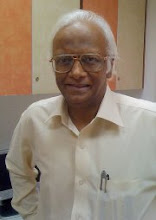DEATH DANCE OVER
KUDANKULAM!
KUDANKULAM!
By SUNNY THOMAS
Before Abdul Kalam set foot on
Kudankulam, it had two notorious visitors – the ghost of Chernobyl Fukushima
Governments across the world
are notorious for hiding facts and figures from the public, and any assurance
on safety must be taken with a pinch of salt. If Kalam’s assurance has not cut
much ice with the villagers, his Rs 200-crore economic package may sell. See
how Mamata Banerjee’s stand on petrol price hike softened when Pranab Mukherjee’s
diplomacy was at work. Politicians in Tamil Nadu as in West Bengal see the wisdom of goodies, and finally the
farmers may allow the Centre to re-start work on the first unit of Kudankulam
power plant, suspended from October 2011.
Which villager is not flattered
by 4-lane roads leading to the destinations he has to frequently travel, like
Tirunelveli, Kanyakumari and Maduri; and employment for 10,000 of their kin,
and self-employment loans? Not just this,
multi-storeyed housing projects with sports
complex for the coastal people, mechanized boats, fish processing and cold
storage facilities for fishermen; and one million litres of drinking water a
day for all after desalinating seawater. If things go smoothly, which
means the money moving on the right lane (not into the pockets of middlemen),
Kudankulam could be the envy of the rest of India
As for the safety of nuclear
plants, there is no country on the Atomic Energy Map of the world that did not
have a tryst with destiny – minor or major disasters that press the panic
button. A catalogue of nuclear plant disasters (search Googles) would turn
nuclear optimist into nuclear sceptist. And no decade passes since Hiroshima Nagasaki
The good news is Tamil Nadu,
with or without Kudankulam, has the potential to be the power house of south India
The projected cost of the two
reactors of 1,000 mw each, being set up at Kudankulam, is Rs13165 crore (US$ 3 billion). But there are hidden costs like the cost
of operation, maintenance and safety, which if taken into account will double
the estimate. Moreover, the government is heavily subsidizing the nuclear power
stations, and the cost of heavy water for reactors is Rs 800 per kg whereas its
costs Rs 30,000 on international market !
The fear of Kudankulam turning
into a dinosaur is slightly misplaced. Listen to M Pushparayan, who
spearheads the agitation: The matter should be discussed with the chief
minister… If she is satisfied and advises us on that point we have no problem
on allowing work to restart at the first unit.
It is amply clear who plays the deity and who plays Hanuman! Is the
Roman Catholic Bishop A Jude Paulraj among the agitators? Well , His Holiness represents the poor fishermen of the coastal region, and those who understand politics know the value of demographic engineering.
To give a quick recap, the
signing of an agreement on November 20, 1988 by Prime Minister Rajiv Gandhi and Soviet President Mikhail Gorbachev
signalled the beginning of this project., which suffered benign neglect for 10
years because of political upheaval and break-up of the Soviet Union . Also, the US
The first unit is expected to go on stream in December (2011).

No comments:
Post a Comment